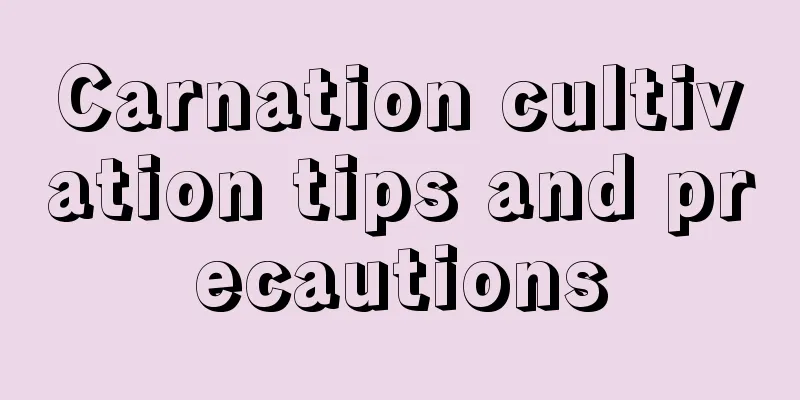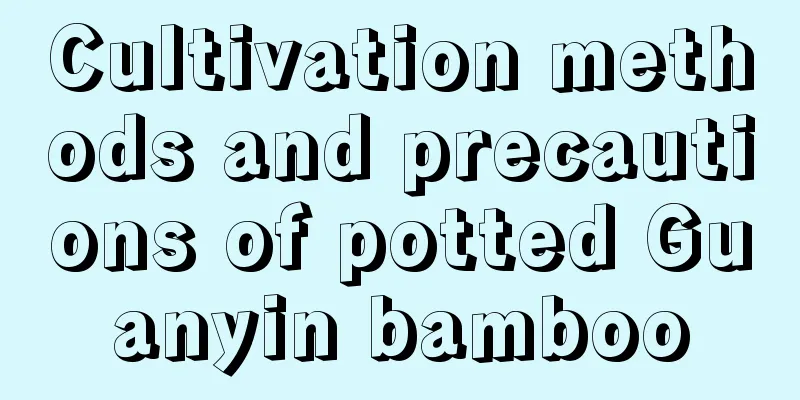Carnation cultivation tips and precautions

|
Carnations are one of the most popular flowers because of their bright colors, rich flower shapes and strong fragrance. It not only has high ornamental value, but also carries profound cultural significance. It is an important flower for expressing love and blessings. The following are carnation cultivation tips and precautions. 1. Lighting Carnations love light and need plenty of sunlight to grow well. It needs at least 6 hours of direct sunlight a day, otherwise it will cause the plant to grow too tall and produce fewer flowers. During high temperatures in summer, proper shading can prevent leaf burns. 2. Temperature Carnations are quite cold-resistant, but the suitable temperature for their growth is 15℃-25℃. The winter temperature shall not be lower than 5℃ and the summer temperature shall not exceed 30℃. In high temperature seasons, pay attention to ventilation and cooling; in cold areas, move indoors or into a greenhouse in winter. 3. Soil Carnations do not have high requirements for soil, but loose, fertile, well-drained slightly alkaline soil (pH 6.5-7.5) is preferred. You can mix leaf mold, garden soil and river sand in a ratio of 2:2:1. 4. Watering Carnations are drought-tolerant but not moisture-tolerant, so watering should follow the principle of "watering when the soil is dry and watering when the soil is wet", that is, water after the soil surface is dry, and water thoroughly when you do. Avoid standing water, which can cause root rot. 5. Fertilization During the growing season (spring and autumn), fertilize 1-2 times a month, mainly with dilute liquid fertilizer. Before flowering, phosphorus and potassium fertilizers can be applied to promote flower bud differentiation and flower opening. Generally, decomposed organic fertilizer (such as chicken manure, cow manure) or compound fertilizer is used. You can sprinkle a small amount of fertilizer on the surface of the potting soil, and then loosen the soil gently to avoid direct contact between the fertilizer and the roots. 6. Pruning Carnations are vigorous growers and require regular pruning. Cut off dead branches, diseased branches and overly dense branches in time to keep the plants ventilated and well-lit. Cut off the remaining flowers in time after flowering to avoid consuming too much nutrients. Carnations can be pinched to promote branching and make the plant fuller. When the plant grows to 15-20 cm, the top buds can be removed to promote the growth of side buds. The above is an introduction to the cultivation techniques of carnations. Cutting is the most commonly used propagation method for carnations. Select healthy branches, cut them into 10-15 cm long cuttings, and insert them into moist sand or vermiculite. Keep the soil moist and the temperature around 20℃. It will take about 2-3 weeks for the roots to take shape.
|
<<: Vegetable planting management guide in March
>>: Fruit tree planting management guide in March
Recommend
What are the cultivation methods and precautions of four-season plum
Introduction of Four Seasons Plum The four-season...
Ten steps to repotting succulent plants in autumn
The first step to repotting succulent plants in a...
Main varieties of ornamental pineapples
1. Pineapple It is also called golden-edged pinea...
Is Photinia suitable for deep or shallow pots?
Use a deep or shallow pot for Chinese photinia It...
How to grow the fragrant vine in winter
Temperature Management The fragrant vine is a pla...
Bougainvillea maintenance and management methods, why does it fall after a few days of blooming?
1. Maintenance and management methods 1. Light: B...
How to grow Daniel succulent and how to grow it into an old pile
1. How to raise 1. Pot and soil selection: When c...
If you can’t grow flowers well indoors, it’s because you didn’t follow these 5 rules
prune Every time we prune, we should carefully ch...
How to plant yellow broom tree stump bonsai?
Yellow broom is a very good bonsai tree material....
How to breed black rabbit ears
1. Cutting In fact, this propagation method is ve...
How to breed Black Prince
How to breed Black Prince We generally use cuttin...
Can the trumpet creeper seedlings bloom in the same year? How big can the seedlings grow in a year?
1. Can the trumpet creeper seedlings bloom in the...
Can I grow a cherry tree at home?
Can I grow a cherry tree at home? You can plant c...
The fastest way to root white orchid cuttings
White orchid cutting time The best time for cutti...
How to prune Xianrenjian? Pruning time and method
Immortal Sword Pruning Time The Immortal Sword is...









